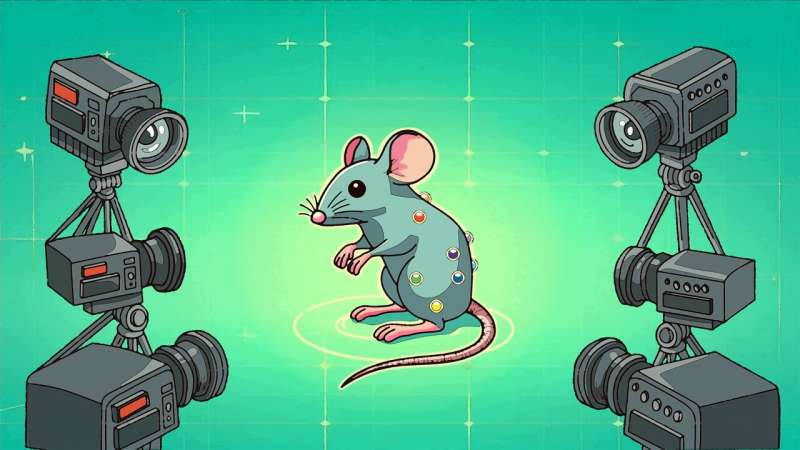In a new study published in eNeuro, researchers from OIST’s Neuronal Rhythms in Movement Unit introduce a mouse motion capture method which provides very high-resolution measurement of mouse movement. Their marker-based approach avoids the need for extensive data processing with AI or machine learning, and can capture high-quality data on complex movement, such as running or climbing.
“Marker-based motion capture is everywhere in the entertainment industry, for video gaming and major movies alike. With the accuracy in 3D tracking that it can provide, the technology could prove transformational to neuroscience.” said Dr. Bogna Ignatowska-Jankowska, first author on this study.
“However, although the field has long been interested in such methods, all other attempts have failed to get any quality data. This is because while larger animals are easier to motion capture, mice pose many challenges. Their size, their tendency to eat anything near them, plus the behavioral changes which present if something is stuck to them, have all hindered any attempts at mouse motion capture. Our new method avoids these pitfalls.”

